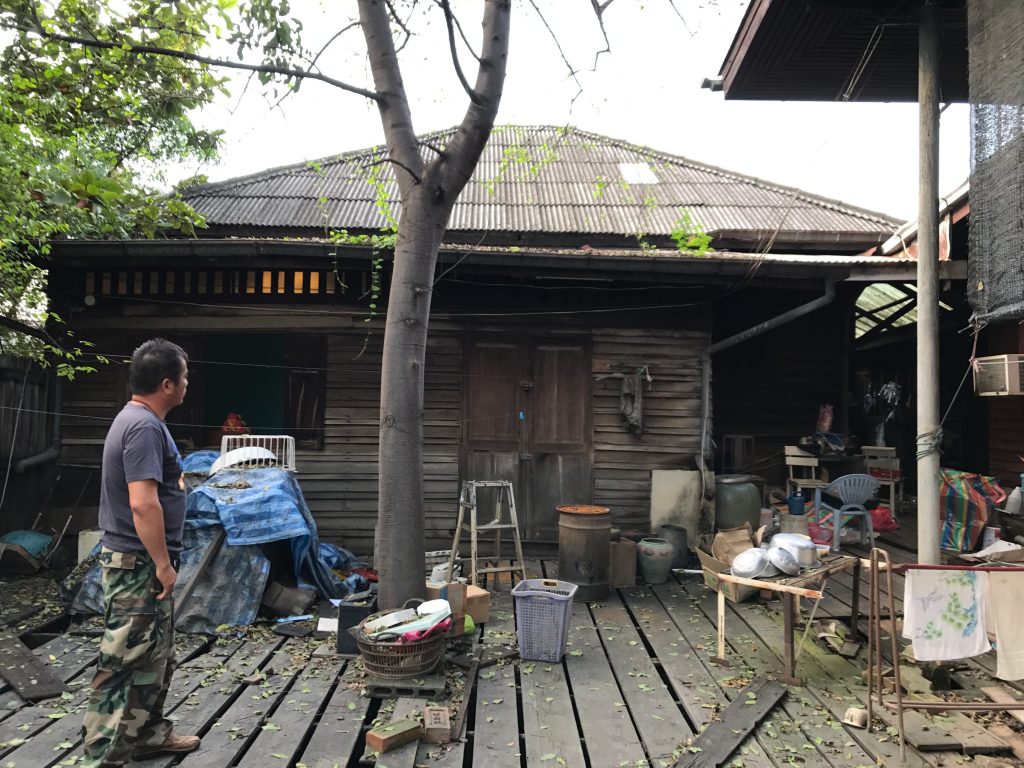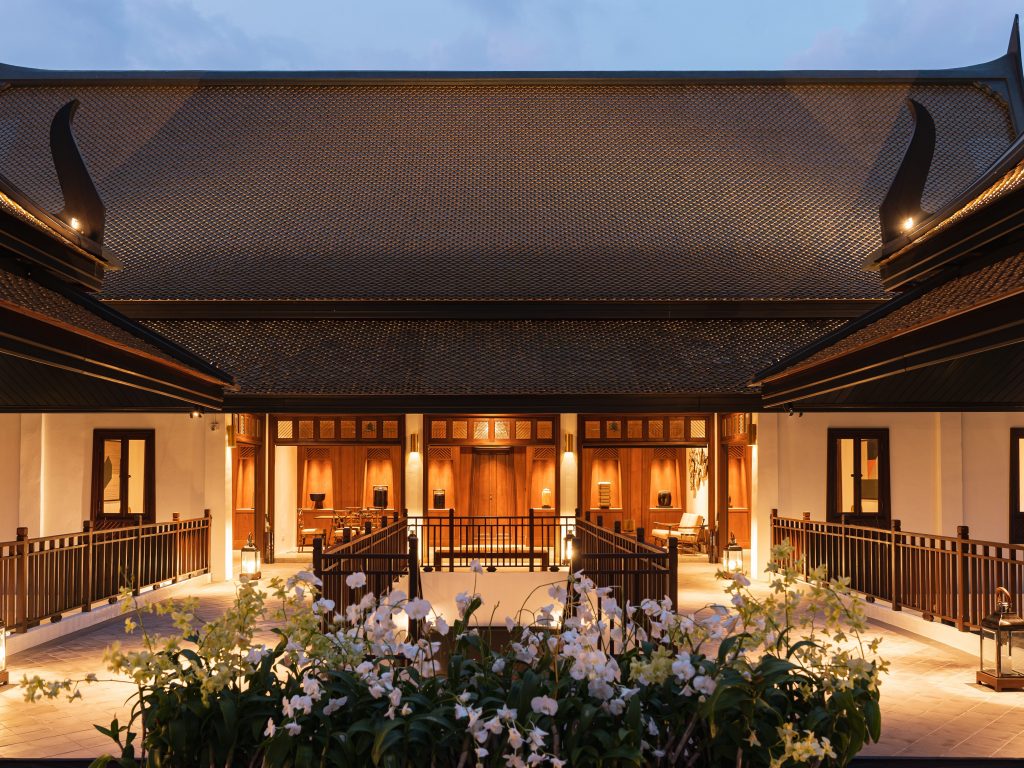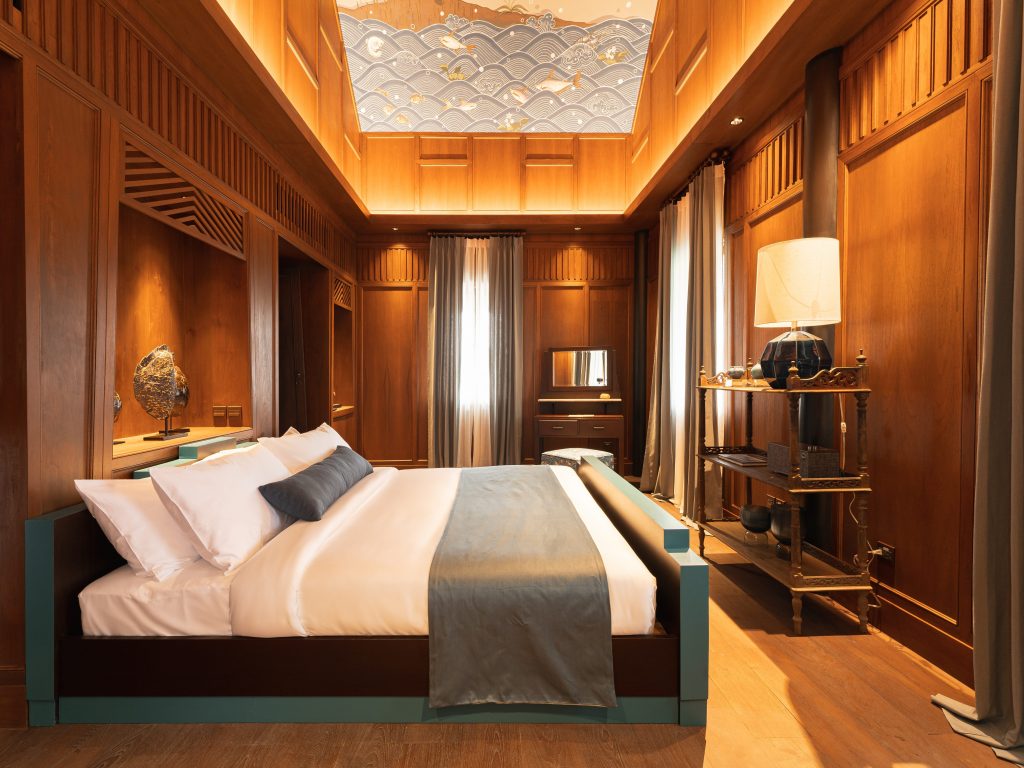- Irma Go and Kirati Thepsoparn bought three dilapidated floating homes in Bangkok in 2016.
- They spent five years turning the home into a five-bedroom waterfront villa.
- The villa, which has a 65-foot saltwater pool, can now be rented from $3,600 a night.
Irma Go and her husband, Art Thepsoparn, were on a boat ride along Bangkok's Chao Phraya River in 2015 when they spotted three dilapidated wooden houses perched on stilts in the water.
"The beauty of the old wooden panels immediately caught my eye," Go, a former teacher, told Insider. What intrigued her even more was the "for sale" sign on the property.
"I pointed to the house and told Art that we should buy it," said Go. "But he said, 'Are you crazy, it's not even on land!'"
As soon as they arrived back at their house in the business district of Bangkok, they called the number on the sign, but received a dead signal.
A year later, Go's friend mentioned that she'd seen a stilt house for sale online. Go arranged to meet the owners of the house. They led her past thick overgrowth to the riverbank, where she found three villas, each one on stilts, surrounding a courtyard.
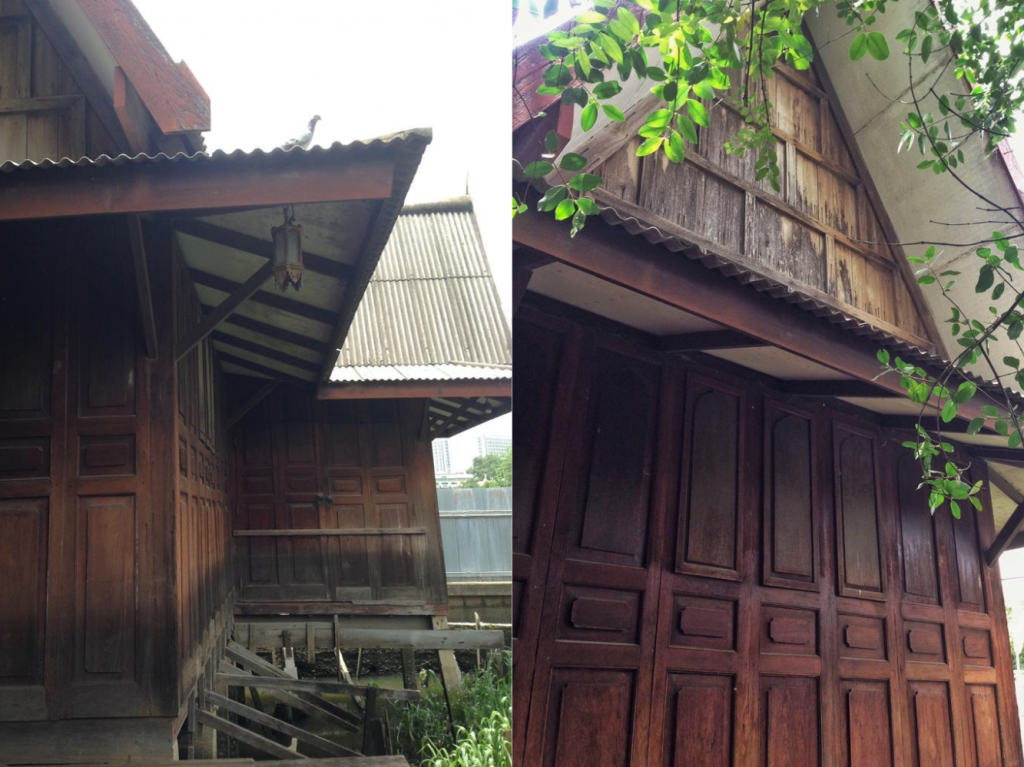
"Every structure was lifted above the water in an elaborate matrix of broken wooden planks," said Go. "I couldn't believe my eyes."
Wooden chests and brass scales lined the interior of each villa. Ceramic ong jars were scattered all over the property for rainwater collection.
"We walked to the edge of the property where it met the canal, and my body prickled with a realization that this was the same house I saw the year before," Go said.
The owners were initially hesitant to sell the house, as it held sentimental value to them. The owner's ancestor, a former tax collector for the royal palace, bought the land and built the first villa in 1910, Go said. The second villa was added after the owner got married; the third villa was built at the back of her property when she started her own family. The owner told Go that when she was a child, she would put her books on her head and swim across the river to go to school.
Go was struck by the desire to preserve this piece of history.
"I had been living in Thailand for 15 years, and just in that short period of time I had seen so many houses disappear and be replaced by skyscrapers, hotels, and glitzy malls," Go said.
The following Saturday, Go brought her husband, who owns a research company, to visit the property. "Someone had already put in a higher bid, but I vowed to be a good custodian for this storied land," Go said.
The couple created a company for the sole purpose of buying the property. The company took out a mortgage, and the couple injected capital into the company to cover the renovation project. Two months later, in May 2016, they received the keys to the property. Go declined to share the price of the property.
Preserving historical elements — but making them liveable in the modern world
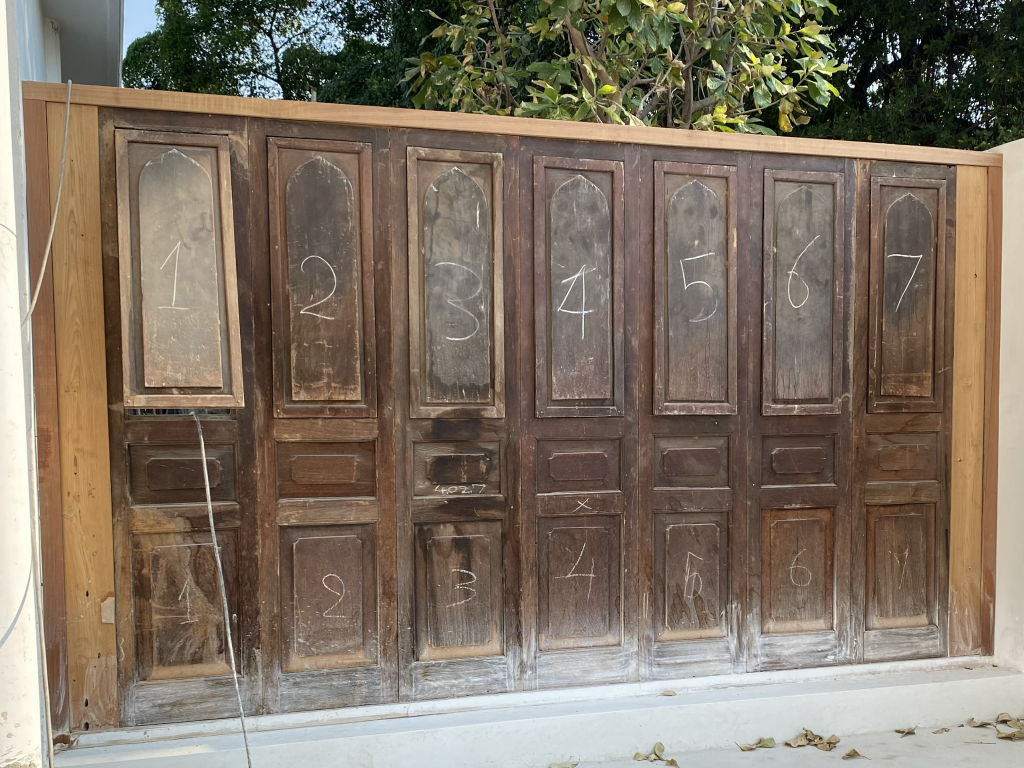
At first, the couple tried to leave the house — which is named Siri Sala — as it was, but they soon realized modern life didn't mesh with some traditional architectural elements. The single-skin teakwood walls made the home hot during the day, and the bathroom was separate from the main house.
Go and Thepsoparn decided to work with a Thai-born architect named Piram Banpabutr, who founded 4b Architects in Bangkok. Banpabutr had worked for Caroe & Partners in London, which specializes in restoring castles and churches.
"Initially, I wanted to leave it just as it was and add a new bathroom," Go said. "But the architects talked me out of it because it was a deathtrap waiting to happen."
Go said she still had some qualms about renovating such a traditional property.
"As I'm from the Philippines, I thought I might be looking at Thai culture with a foreign lens," Go said. "And while Art was born in Thailand, he is of Chinese heritage. We tread very lightly because we were afraid of making the wrong decisions."
For inspiration, they traveled to the heritage city of Ayutthaya and the riverside city of Ratchaburi to see the works of Thai artisans.
Keeping the spirit of the original layout
Go and Thepsoparn started to look at fine hotels for inspiration but ultimately scrapped plans for Western-style fountains, a wine cellar, and an underground spa.
"The project was heading towards excessive grandeur, so we had to keep editing and reminding ourselves that we are building a home and not a hotel," Go said.
"We struggled to find a balance," Go added. "Two years went into debating and editing in order to come up with the right interpretations."
They decided to keep to the spirit of the original layout: three Thai structures sharing an elevated courtyard and views of the river. Eventually, they moved the houses onto dry land.
"We tried very hard to police ourselves in the decisions we made," Go said. "We asked an architect to sketch accurate depictions of the houses before being taken down; we hired craftsmen from Ayutthaya to mark each plank before it was dismantled, so the house could be reassembled correctly; and we even hired a film crew to interview the mother and son about their memories growing up in these water houses."
Over the next five months, the builders dismantled the villas, built a flood wall, and filled it with soil. They also rebuilt the stilt houses further back from the river to have an elevated river view.
The oldest stilt house also showed signs of wear from being in the water for 100 years, so the couple removed it from its stilts and repurposed it into a bar, which now stands in the garden.
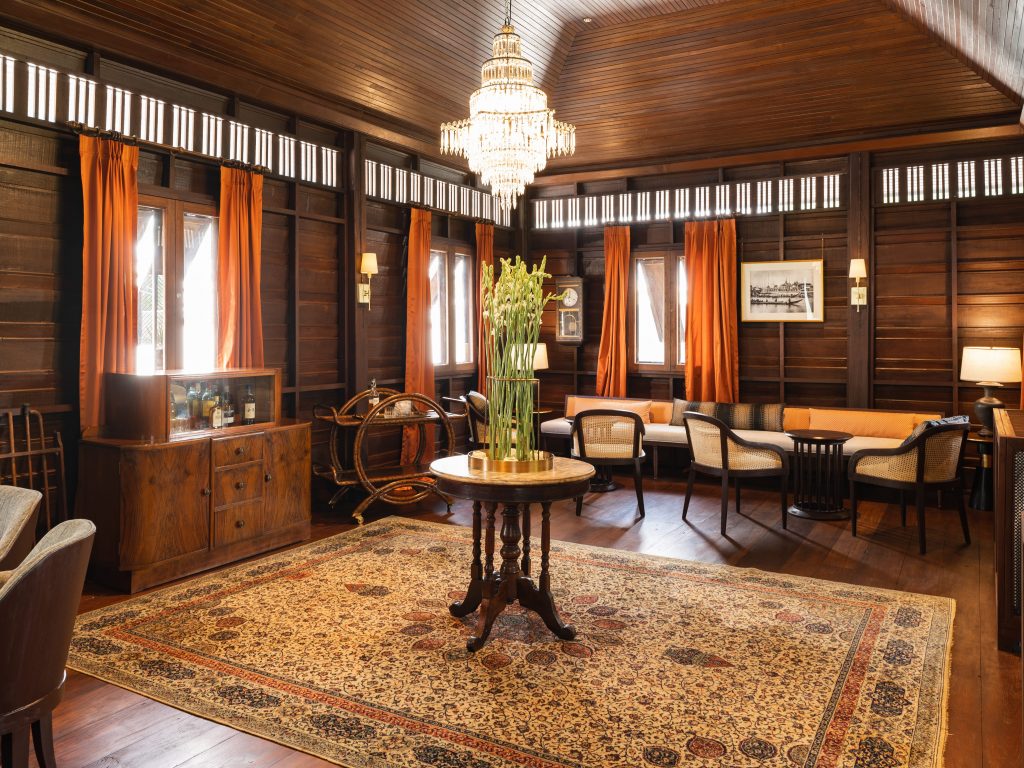
Go and Thepsoparn also ensured no parts of the original building went to waste. They turned old floorboards into dining tables, stairs, and benches.
"When they moved out, I told them to leave anything they no longer wanted behind. Their old water jars became our treasures," Go said of the original owners.
Even though they upcycled whatever they could, they still went over budget: Go said the five-year-long renovation cost them three times the amount they paid for the property.
Go now rents the waterfront villa from $3,600 a night
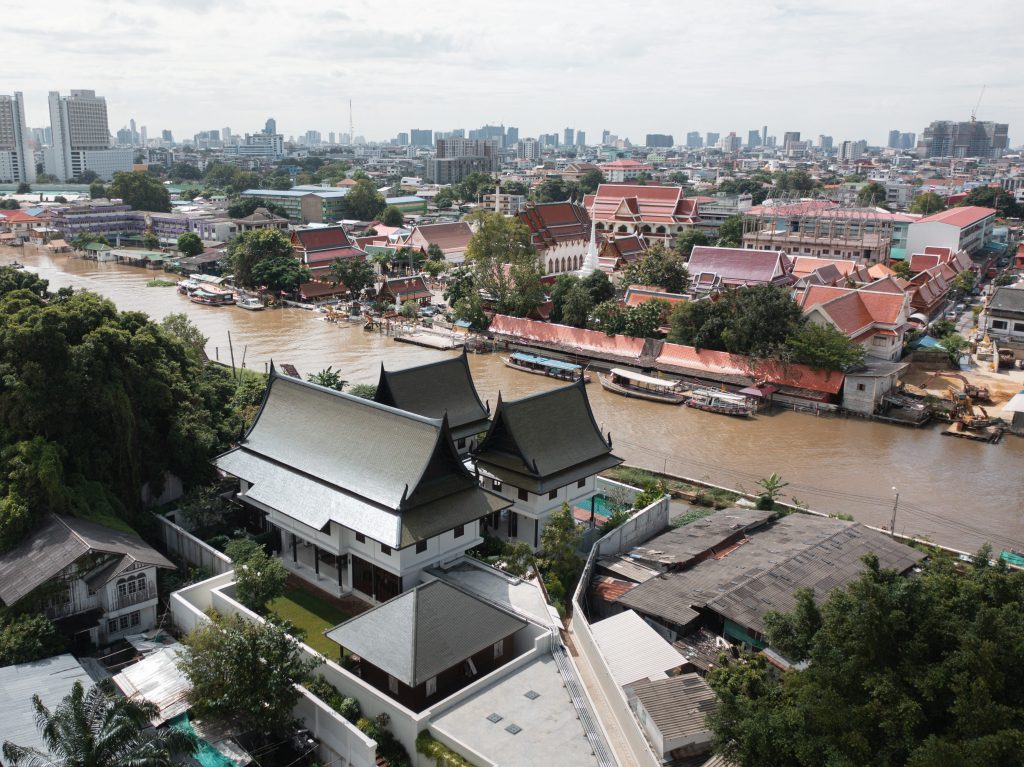
Today, the waterfront villa has five bedrooms, a library, a games room, a 65-foot saltwater pool, and a garden filled with Thai herbs. The private villa is available for rent from $3,600 a night on Siri Sala's official website.
Lucrecia Rodríguez de Acuña from Bangkok, who owns a party decorations company, rented the villa for her three-generation family to celebrate New Year's Eve in 2021.
"Siri Sala is in the center of the city, but it is so private," said Acuña.
As Siri Sala is spread across the three former stilt houses, it gave her family the option to mingle or have their own space. "It is as luxurious as a hotel, but has a homey feel," she added.
Go, for her part, said she enjoys welcoming guest into her home and showing a new generation of people a slice of history: "When I glance out to the river, I often think of the adventurers, royals, and tradesmen who once plied its path."
